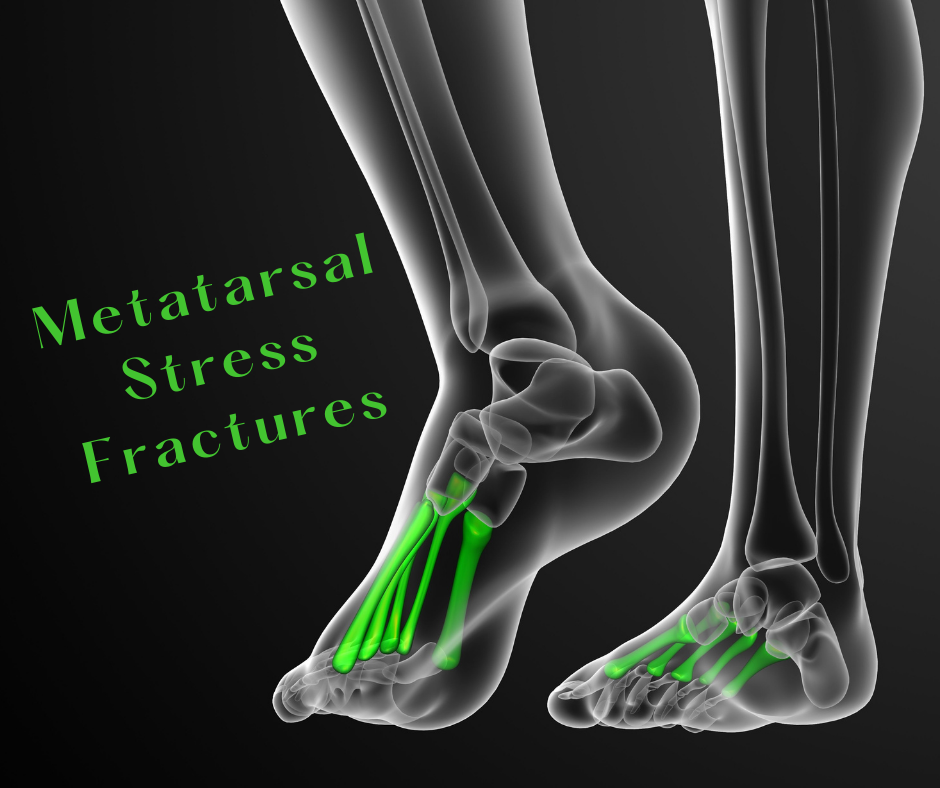Has someone inspired you to take up running, or to step up your existing exercise routine, you might have found yourself developing pain in your foot. It’s tempting to dismiss it as just a normal side effect of your new regime, but it could actually be a fracture. No, it’s probably not a completely broken bone, but a stress fracture – a small crack or severe bruising within the bone that, if left untreated, could cause you some serious problems.

What Is A Stress Fracture?
Unlike other types of fracture, stress fractures don’t involve an actual snap in the bone and are not caused by trauma. Instead, a stress fracture is where a tiny crack develops over time, often several weeks.
Stress fractures are usually caused by overuse or repetitive actions. Suddenly changing your exercise routine by taking up a new activity, or substantially increasing the intensity of your workout can also lead to stress fractures.
What Are The Metatarsal Bones?
You have five metatarsal bones in each foot, which run from the base of your toes back towards the middle of your arch. They connect the toes to the tarsal bones in the middle part of your foot. Metatarsal bones are some of the most commonly fractured bones in the body due to the amount of repeated pressure they absorb in activities like running, walking and jumping.
Who Is At Risk From A Metatarsal Stress Fracture?
Regular, repetitive motions in the foot are the most common causes of metatarsal stress fractures, making runners particularly susceptible. If you have recently taken up running or are trying to run too far too soon, you are at an even greater risk of developing a stress fracture.
Other sports, such as basketball, tennis, gymnastics and dance, that put a great deal of repeated pressure on the foot are also common causes. Whatever sport you are taking part in, you should always ensure you have the correct footwear and that it fits properly – as poor footwear increases the chances you will over-stress your metatarsals.
Stress fractures can also occur as a result of a different injury entirely! For example, if you sustain damage to an ankle, knee or hip and don’t seek treatment, you may end up overloading different areas of your foot to compensate for the pain elsewhere.
Osteoporosis, vitamin D deficiency and certain foot problems can also increase the likelihood of metatarsal stress fractures.
What Are The Symptoms Of A Metatarsal Stress Fracture
If you do develop a stress fracture in your metatarsal you will likely experience pain in your foot that will be worse during activity but will lessen when you rest.
You might also notice swelling at the top of your foot, and it may be tender to touch. There could also be some bruising or redness around the area. Some people will have balance problems or an uneven gait.
What Are The Treatment Options?
If left untreated, stress fractures can develop into a complete break or lead to chronic conditions.
If you suspect you have a metatarsal stress fracture, you must rest your foot. You can apply ice to ease the pain and elevate your foot to reduce swelling. Avoid tight or heeled shoes. Then make an appointment with us here at TM Physio.
We will look at any immediate interventions that will help the healing process, such as wearing a moon boot for a short period to de-load and allow the bone to repair itself. Then we might suggest footwear modifications or advise on your exercise routine changes to prevent the issue worsening or recurring.
If the stress fracture was caused by a previous injury, this will need to be addressed as well.


